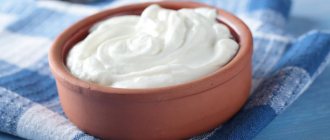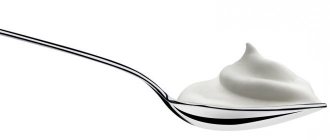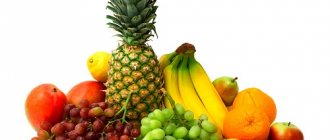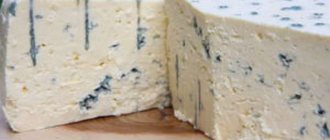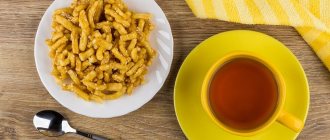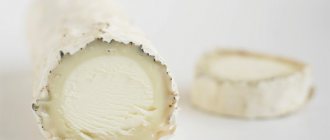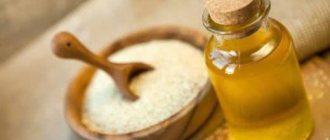Who hasn't heard of Prostokvashino? This is a cartoon village where the boy Uncle Fyodor, the dog Sharik, the cat Matroskin and the wonderful cow live. But in this article we will not talk about the difficult relationship between the characters in the series and the postman Pechkin. This cartoon became a cult cartoon, and on the wave of popular popularity, a brand producing dairy products appeared - Prostokvashino. Sour cream from this manufacturer is in our focus today. What is hidden in this white glass with blue stripes, which we so stubbornly associate with the cat Matroskin? Not only Roskontrol helped us find this out, but also ordinary consumers who do not spare praise for Prostokvashino sour cream.
Brand emergence
Who owns the company with that name? Users cannot figure out where Prostokvashino sour cream is produced: Russian, Ukrainian, Belarusian? Buyers show photographs of the inscriptions decorating a cup with a fermented milk product - Kremenchug in the Poltava region and Kherson (Ukraine), Shklov and Pruzhany in Belarus. And in Russia, until recently, as many as twenty-six factories produced sour cream under the Prostokvashino brand. But who is the manufacturer of this delicious dairy product? Meet... She doesn't need advertising. This company is known to consumers for its yoghurts. It also owns the brands “Tyoma”, “Activia”, “Rastishka”, “Biobalans” and others that produce fermented milk products or baby food. And “Prostokvashino” in Russia was born in 2002 on the basis of Danone’s cooperation with the domestic company, as well as thanks to an agreement with the author of the cartoon on the use of the name and characters to create external advertising.
Assessment of the quality and safety of the developed yogurt
Recently, the market for milk and dairy products has been saturated with many product manufacturers. To ensure the competitiveness of products, it is necessary to monitor quality, safety, and organoleptic indicators. We have determined the quality and safety indicators of the developed yogurt, as well as sensory evaluation indicators that meet the requirements of regulatory documentation.
Key words : yogurt, quality, organoleptic characteristics, standards, safety.
One of the most important factors influencing people's health is healthy nutrition. The inherent chemical, physical and biological properties of the products satisfy energy, hygienic and organoleptic needs. In this regard, it is necessary to control the quality and safety of manufactured products in accordance with standards [1–4]. There are indicators of food quality that are determined by the characteristic properties of the product. The quality of finished products is significantly influenced by: the quality of raw materials, production conditions and methods, packaging, transportation, and storage [5, 6].
The following requirements are imposed on dairy products, regulated by regulatory documents: technical regulations of the Customs Union 033/2013 “On the safety of milk and dairy products” (hereinafter referred to as TR CU); SanPiN 2.3.2.1078–2001 “Food raw materials and food products. Hygienic requirements for the safety and nutritional value of food products. Sanitary and epidemiological rules and regulations" (hereinafter referred to as SanPiN); Federal Law No. 88 “Technical Regulations for Milk and Dairy Products” (hereinafter referred to as Federal Law No. 88). Milk and dairy products of industrial production must be produced in accordance with regulatory or technical documentation developed, agreed upon and approved in the prescribed manner. We are planning to develop and approve the “Functional Yogurt” standard.
To determine the quality of food products, there are two types of methods - organoleptic and laboratory (measuring). With the help of the first, consistency, smell, taste, color and appearance are determined using such senses as vision, hearing, smell and touch. In some cases, a score is introduced for a more accurate conclusion about the quality of the product [7]. Using the measuring method, chemical, physical, physiological and microbiological indicators of food quality are determined. To expand the range of fermented milk products, in particular yoghurts, yoghurt was developed containing as initial components: cow's milk, oat flakes, starter in the form of a bacterial concentrate, natural bee honey, stabilizer, concentrated whey, dried apricots, candied beets or carrots. This composition makes it possible to obtain functional yoghurt, balanced in chemical composition, with high nutritional value. Profilograms of organoleptic indicators of experimental samples of yoghurts with candied carrots and candied beets are presented in the figure.
Rice. Profilograms of organoleptic indicators of experimental samples of yoghurts with candied carrots and candied beets
For the organoleptic characteristics of the studied samples, a five-point rating scale was used, including the main organoleptic indicators obtained through expert assessment. From the above profiles it is clear that the experimental sample with candied beets has the highest organoleptic characteristics. The use of candied beets as a vegetable filler can improve organoleptic characteristics, as well as increase the nutritional value of the product [4–6].
Criterion indicators of the organoleptic qualities of functional yogurt have been determined and studied. The results of the study are presented in Table 1.
Table 1
Organoleptic characteristics of yogurt
| Index | Requirements | Research results |
| Appearance and consistency | Homogeneous, moderately viscous liquid. When a stabilizer is added, it becomes jelly-like or creamy. When adding food flavoring components - with their presence | Matches, with pieces of vegetables |
| Taste and smell | When adding sugar or sweeteners, the taste is moderately sweet. When adding food-flavoring components - due to the added components | Complies with vegetable flavor |
| Color | Milky white, uniform or due to added components | Compliant |
The following physicochemical characteristics were determined in yogurt: mass fraction of protein, fat, SOMO, lactic acid microorganisms (Table 2).
table 2
Physico-chemical parameters of yogurt
| Index, % | Requirements | Research results | ||
| Federal Law No. 88 | TR TS | SanPiN | ||
| Mass fraction of protein | 3.2, 2.8 with added components | Not less than 2.8 | — | 3,4 |
| Mass fraction of fat | 0,1–10 | 0,1–10 | — | 0,1 |
| SOMO | Not less than 7.0 | Not less than 8.5 | — | 9,4 |
| Lactic acid microorganisms, probiotic microorganisms, yeast, CFU/g (cm3) | At least 1×106 | At least 1×106 | — | 3.2x108 lactic acid microorganisms |
Microbiological parameters were determined (Table 3); the content of toxic elements was studied (Table 4); antibiotic content (Table 5); pesticide content (Table 6); mycotoxin content (Table 7); content of oxidative spoilage (Table 8); radionuclide content (Table 9).
Table 3
Microbiological indicators of yogurt
| Indicator name | Requirements | Research results | ||||
| Federal Law No. 88 | TR TS | SanPiN | ||||
| KMAFAnM, CFU/cm3 (g) | at least 1x107 lactic acid microorganisms | — | 3.2x108 lactic acid microorganisms | |||
| Weight of product (g), which is not allowed | ||||||
| Coliforms (coliforms) | 0,01 | 0,01 | 0,01 | Not detected | ||
| pathogenic, including salmonella and L.monocytogenes | 25 | 25 | 25 | Not detected | ||
| staphylococcus S.aureus | 1,0 | 1,0 | 1,0 | Not detected | ||
| Bacteria B. cereus, CFU/cm3 (g), no more | — | — | — | Not detected | ||
| Yeast (D), mold (P), CFU/cm3 (g), no more | — | — | — | Not detected | ||
Table 4
Content of toxic elements in yogurt, mg/kg (l), no more
| Indicators | Requirements | Research results | ||
| Federal Law No. 88 | TR TS | SanPiN | ||
| lead | 0,02 | 0,02 | 0,1 | Less than 0.001 |
| arsenic | 0,05 | 0,05 | 0,05 | Less than 0.001 |
| cadmium | 0,02 | 0,02 | 0,03 | Less than 0.001 |
| mercury | 0,005 | 0,005 | 0,005 | Less than 0.0001 |
Table 5
Antibiotic content in yogurt, mg/kg
| Indicators | Requirements | Research results | ||
| Federal Law No. 88 | TR TS | SanPiN | ||
| chloramphenicol | Less than 0.01 | Not allowed (less than 0.0003)* | Not allowed (less than 0.01) | Not detected |
| tetracycline group | Less than 0.01 | Not allowed (less than 0.01) | Not detected | |
| Penicillin | Less than 0.004 | Not allowed (less than 0.004) | Not detected | |
| Streptomycin | Less than 0.5 | Not allowed (less than 0.2) | Not allowed (less than 0.5) | Not detected |
*Effective from July 1, 2015
Table 6
Content of pesticides in yogurt (in terms of fat), mg/kg (l)
| Indicators | Requirements | Research results | ||
| Federal Law No. 88 | TR TS | SanPiN | ||
| – HCH (α, β, γ are isomers) | No more than 0.02 | No more than 0.02 | No more than 0.05 | Less than 0.0001 |
| – DDT and its metabolites | No more than 0.01 | No more than 0.01 | No more than 0.05 | Less than 0.0001 |
Table 7
Mycotoxin content in yogurt
| Index | Requirements | Research results | ||
| Federal Law No. 88 | TR TS | SanPiN | ||
| Aflatoxin M1, permissible levels, mg/kg (l) | 0,00002 | Not allowed (less than 0.00002) | 0,0005 | Less than 0.00001 |
Table 8
Indicators of oxidative spoilage in yogurt
| Index | Requirements | Research results | ||
| Federal Law No. 88 | TR TS | SanPiN | ||
| Peroxide value, no more | 4 mmol active oxygen/kg fat (for products with a fat content of more than 5 g/100 g and products enriched with vegetable oils) | — | See note | |
Note: No studies have been conducted because the yogurt is low-fat and not enriched with vegetable oils
Table 9
Radionuclide content (Bq/kg(l)), specific activity in yogurt
| Indicators | Requirements | Research results | ||
| Federal Law No. 88 | TR TS | SanPiN | ||
| Cesium-137 | 40 | 40 | 100 | 12 |
| Strontium-90 | 25 | 25 | 25 | 4 |
The functional yoghurt we developed meets all the quality and safety requirements regulated by the above-mentioned current regulatory documents (see tables 2–8), and also meets consumer expectations. We have filed a patent application for “Functional Yogurt” (patent holder SUSU).
Literature:
1. Rebezov M. B., Bogatova O. V., Dogareva N. G. Alkhamova G. K., Naumova N. L., Zalilov R. V., Maksimyuk N. N. Fundamentals of the technology of milk and dairy products. Chelyabinsk: ITs SUSU, 2011. Part 1. 123 p.
2.
Asenova B. K., Rebezov M. B., Topuria G. M., Topuria L. Yu., Smolnikova F. Kh. Quality control of milk and dairy products. Almaty: Khalykaralyk zhazylym agents, 2013. 212 p.
3. Belokamenskaya A. M., Rebezov M. B., Mazaev A. N., Rebezov Ya. M., Maksimyuk N. N., Asenova B. K. Study of food products and food raw materials for mercury content by the atomic absorption method . Young scientist. 2013. No. 10. pp. 98–101.
4. Bogan V.I., Rebezov M.B., Gaisina A.R., Maksimyuk N.N., Asenova B.K. Improving methods for quality control of food raw materials and food products. Young scientist. 2013. No. 10. pp. 101–105.
5. Alkhamova G.K., Maksimyuk N.N., Naumova N.L., Amerkhanov I.M., Zinina O.V., Zalilov R.V., Rebezov M.B. New curd products with functional properties. Chelyabinsk: ITs SUSU, 2011. 94 p.
6. Rebezov M. B., Miroshnikova E. P., Alkhamova G. K., Naumova N. L., Khairullin M. F., Zalilov R. V., Zinina O. V. Methods for studying the properties of raw materials and dairy products . Chelyabinsk: ITs SUSU, 2011. 58 p.
7. Rebezov M. B., Naumova N. L., Alkhamova G. K., Kozhevnikova E. Yu., Sorokin A. V. Supply conditions for fortified dairy products: the example of Chelyabinsk Dairy industry. 2011. No. 8. pp. 38–39.
Product range
In 2003, the first products of this brand were released in St. Petersburg. But the yoghurts, sour cream and kefir were called “From Prostokvashino”. In 2008, the company carried out a restyling, thanks to which it was possible to achieve an increase in sales volumes. Thus, the brand received the name “Prostokvashino”.
Sour cream and yoghurts are not the only products of the company. Soon she began supplying the shelves with milk (including baked and condensed milk), fermented baked milk, cottage cheese, glazed cheeses, cream, butter, sourdough and even cocktails. In 2009, a rebranding was carried out. The slogan has also changed. Previously, he relied on the patriotic feeling of Russian consumers: “Try ours, Prostokvashenskoe.” Now the brand has gained popularity, its products have become indispensable in the diet of ordinary people. Accordingly, the slogan also changed. Now it sounds like “What would we do without Prostokvashino?” The main character in the promotional videos was the cat Matroskin, a cute character who takes great care of his cow.
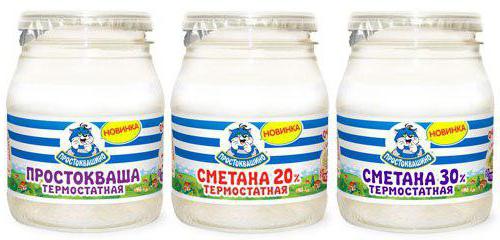
Use of products for culinary purposes
This dish can be eaten on its own or used for cooking.
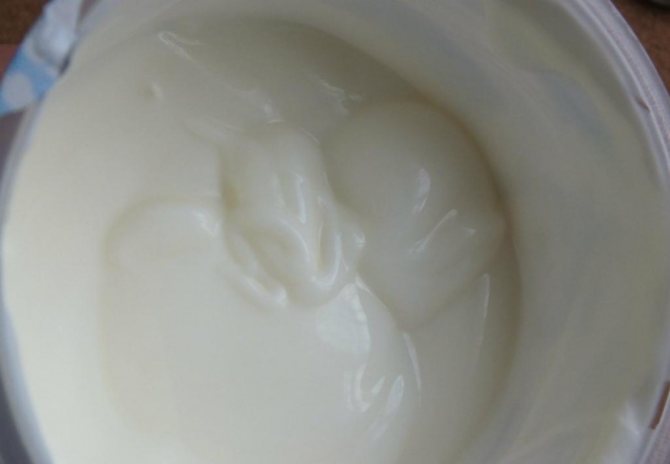
White classic yogurt “Prostokvashino” is eaten for breakfast or as an afternoon snack. It is also an excellent low-calorie dinner option for those who care about a slim figure and good digestion. This product goes well with liquid honey, jam, nut kernels, fresh fruits and berries, cereals, and dried fruits. Some chefs use white Prostokvashino yogurt as a sauce for vegetable salads and fish dishes. This dressing is delicious and contains very few calories.
Packaging of sour cream "Prostokvashino"
The product is available in plastic cups. This is very convenient, users note, since the bags, although hermetically sealed, can still be pierced by something sharp or they can simply tear. In addition, you can get all the sour cream out of the glass, to the last drop. But in packages in the form of a cellophane pillow, there is always something left. The cups are hermetically sealed with aluminum foil, thick enough not to tear. Photos of Prostokvashino sour cream demonstrate that the product is available in four types, differing in fat content: ten, fifteen, twenty and twenty-five percent.
Standard cups have a net weight of 350 grams. But there are also small packages in the assortment - 200 g each. True, they come only with fifteen and twenty percent fat content. It is easy to distinguish them, reviews say. The fattest sour cream has a red “tab” that you need to pull to open the cup, the middle one is yellow, and the thinnest one is green. Large packages are equipped, in addition to the membrane, with a transparent cap. All packages feature the cat Matroskin.
Reviews note that on supermarket shelves, Prostokvashino products immediately catch the eye due to their pleasant colors and cartoon character. The production and expiration dates are printed on the membrane, which is also very convenient.
Sour cream "Prostokvashino": composition
The list of ingredients of this fermented milk product can be read on each glass. It's very short. This is cream obtained from whole cow's milk and a leaven of lactic acid bacteria. Every farmer will tell you that this is the only way to make real sour cream. Users are confused by the word “normalized” when referring to cream. But this term does not contain anything criminal. Cream that is too thick is simply diluted to the fat content indicated on the label. The product is approved by GOST (under number 52092-2003), and this alone guarantees that it contains no starch, no soy, or harmful flavoring additives.
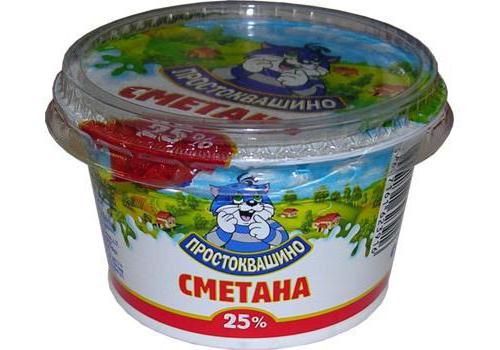
Composition of yogurt

In addition to the above lactic acid microorganisms, acidophilus bacillus, as well as other cultures of bifidobacteria - L. cremoris, L. plantarum, L. lactis, L. fermenti, L. diacetylactis, L. fermenti, Leuconostoc spp. can be added to yogurt. Such a product, which contains probiotics in addition to the standard starter, is considered extremely useful: bifidobacteria give it increased biological activity.
Yogurt is rich in calcium (25% of the daily value per 100 g), phosphorus (15% of the daily value per 100 g), iodine, vitamins B2 and B12, contains ascorbic acid, choline, retinol, vitamin PP, vitamins B1, B3, B6, D , organic and fatty acids, and it contains the same amount of potassium as bananas. Other minerals that are present in yogurt: magnesium, sodium, sulfur, iron, manganese, chromium, zinc, fluorine.
Calorie content of yogurt
To prepare yogurt, not only natural, but also reconstituted, normalized, and recombined milk is used. The calorie content of the finished product is determined by the fat content of the raw materials and varies from 50 to 250 kcal per 100 g. A natural product with a fat content of 1.5% has a calorie content of 51 kcal per 100 g, a fat content of 2% - 60 kcal per 100 g, a fat content of 3.2% - 68 kcal per 100 g. Nutritional value of yogurt: 3-5 g of protein, 4-16 g of carbohydrates, 0.1-15 g of fat per 100 g of product.
Professional analysis of product quality
It is possible to check whether the glass contains only what is written in the glass only in the laboratory. Fortunately, Roskontrol conducted a professional analysis of all parameters of Prostokvashino products. Sour cream (control sample) was selected with twenty percent fat content. In terms of organoleptic properties (color, smell, consistency and taste) it meets the standards. No starch or stabilizers were found in sour cream. Moreover, there were no pathogenic bacteria or antibiotics there. The only comment made by Roskontrol concerned the shelf life of the product. It is thirty days. This is too long a period for a product without stabilizers and preservatives. But laboratory workers did not find direct evidence of their use. The long shelf life can be explained by the sealed packaging.
Nutritional value of the product
Most people like Prostokvashino sour cream. Its calorie content directly depends on the percentage of fat content. So, in 25% sour cream it is 247 units per 100 grams of product. The twenty percent product contains 204 kcal/100 g. For those who are watching their figure, the company offers low-fat products. So, in 15% Prostokvashino sour cream the nutritional value is 160 calories per 100 grams, and in 10% it is even 117. Based on this, the last two products can be considered dietary.

Consumption standards
In some countries, such as Denmark and Central America, yogurt is consumed more frequently and in greater quantities than in all others. This is due to local food traditions, in which yogurt must be drunk at breakfast or used as a topping for porridge and muesli.
Nutritionists recommend consuming 300 ml of yogurt every day in the first half of the day.
Pregnant women, as well as breastfeeding mothers, can safely consume homemade yoghurt, but doctors recommend preparing it without any additives and not using store-bought yoghurts for these purposes.
Young children can be given yogurt from the age of six months, but only liquid, homemade and without additives. The temperature of the product for the baby should be room temperature to avoid colic.
Children can be given no more than one hundred grams, while carefully monitoring the baby’s reaction. If his stool is not disturbed, no allergic reactions appear on the skin, and he is not capricious and feels well, you can safely introduce the product into daily use. The observation period for the child’s reaction is 3 days from the first feeding.
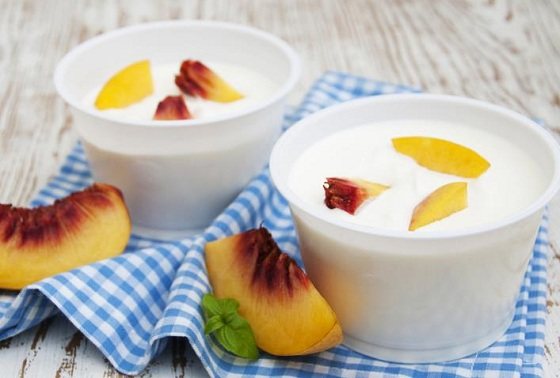
Taste and other qualities from the point of view of ordinary consumers
In 2009, the Prostokvashino trademark received the honorary title “Brand of the Year” among Russian goods. Sour cream, cream, milk, cheese, butter, yoghurt, sourdough – consumers really like all this. These products are natural, properly packaged. As for sour cream, users praise it for its sour, creamy taste and creamy texture. The smell of the product is natural, there is no starch taste. Low-fat sour cream has a thin consistency, therefore, it does not contain artificial thickeners. The Prostokvashino product has a fairly high price (compared to other brands). But the brand often organizes competitions and promotions. So buying a product of this brand can result in benefits.
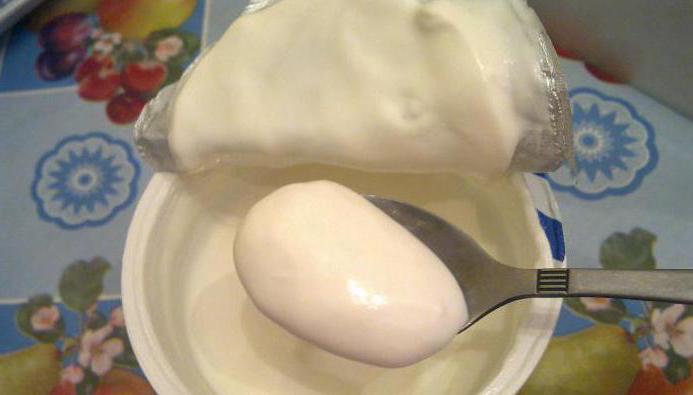
Consumer opinion about product quality
Customer reviews of this product are mostly positive.
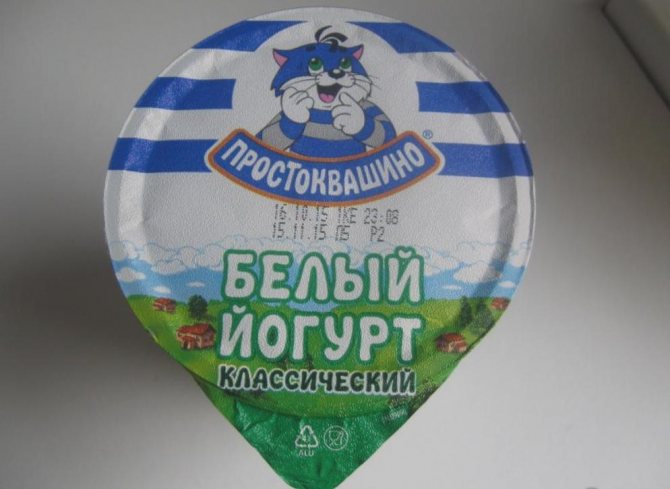
According to many people, white Prostokvashino yogurt has a pleasant taste and delicate texture. It is low in calories. The absence of sugar in the product is also an undoubted advantage. Many consumers claim that this yogurt is a good option for those who follow a healthy diet and want to stay slim. It is used as a dressing for salads and hot dishes (instead of sour cream and mayonnaise sauce), and eaten for dessert in combination with berries and jam.
However, some people also note shortcomings of the product. They are confused by the presence of artificial ingredients (gelatin, stabilizer) in yogurt. Buyers also claim that the price of the product is quite high and the packaging is too large. In addition, some consumers believe that without berries and fruits it does not seem tasty enough.
Thermostatic products from Prostokvashino
Let's remember how sour cream was made in the old days. The tops were removed from the milk, it was placed in a jar, and it was placed in a warm place. After some time, the cream fermented and sour cream was obtained. Right in the jar. Modern production methods do not require long waiting times. Cream is fermented by introducing lactic acid bacteria into it. But recently the company began making products in a traditional, more natural way. This is how yogurt and thermostatic sour cream “Prostokvashino” appeared on store shelves. Reviews mention that these products are premium. Sour cream (it comes in 10, 20 and 30% fat content) is sold in lid-shaped glass jars, which are hermetically sealed with an aluminum membrane. The shelf life of such a product is one month from the date of production. The sour cream is thick, tasty, with a creamy smell. The price of a jar is from 65 to 85 rubles.
